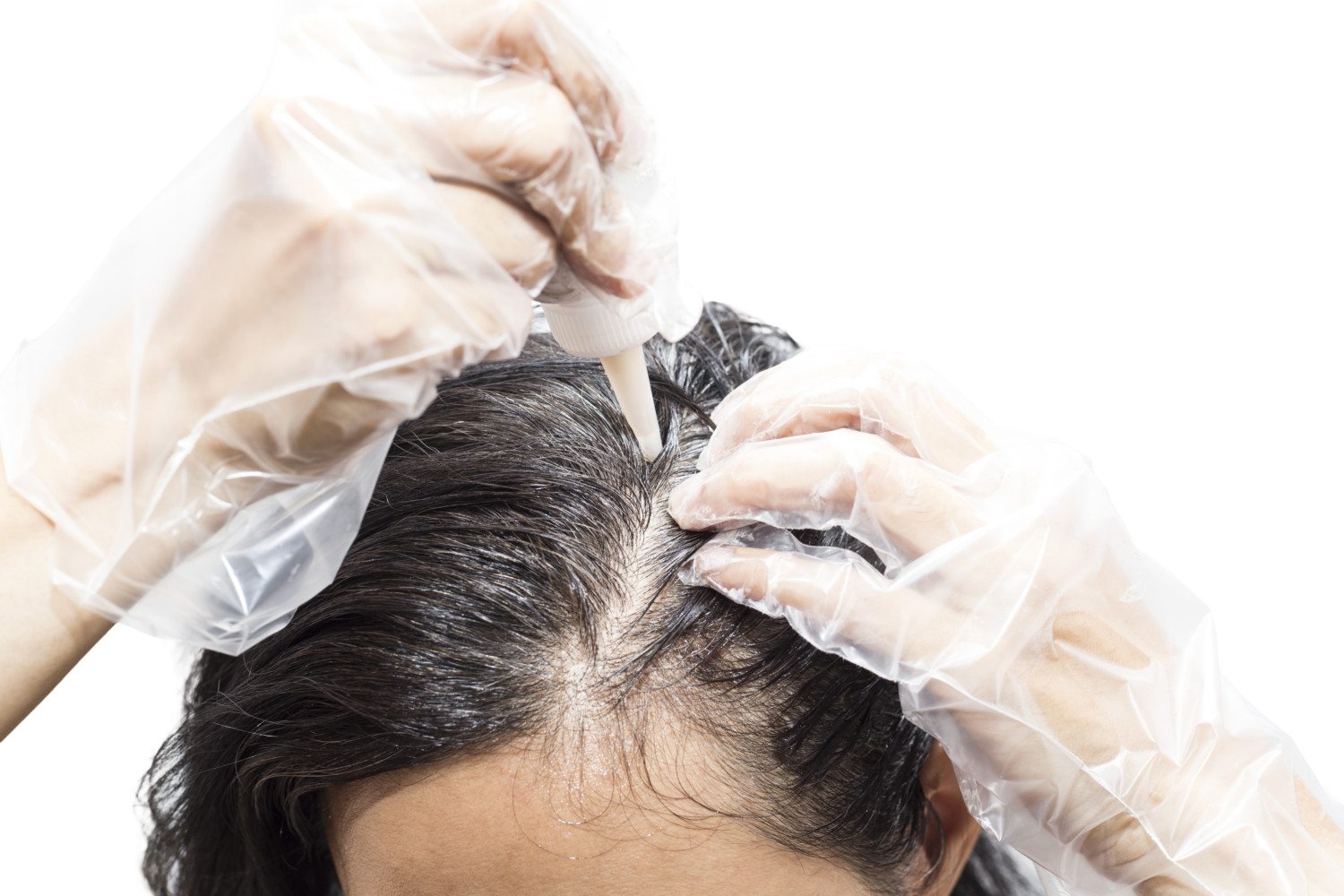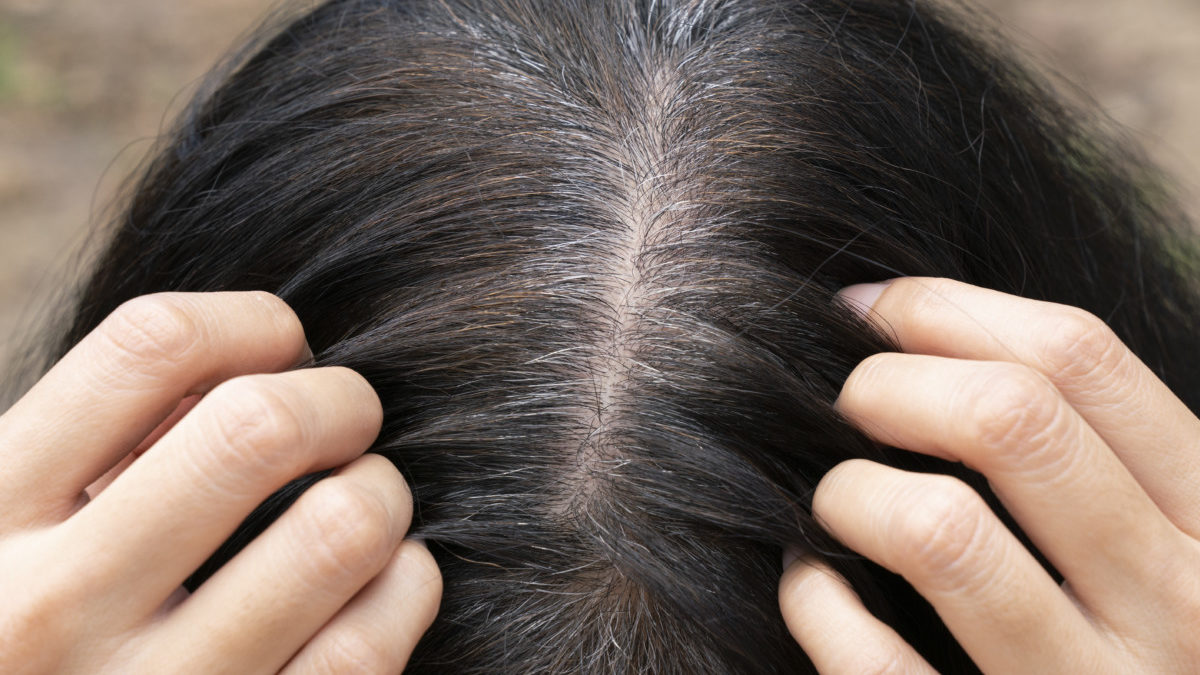The products and services mentioned below were selected independent of sales and advertising. However, Simplemost may receive a small commission from the purchase of any products or services through an affiliate link to the retailer's website.
One of the first — and most unwelcome — signs of aging is the emergence of gray hair.
For some of us, it starts in our 20’s: A few strands of white here or there, then a bit of offered folk wisdom like, “Don’t pull ’em out or ten more will grow in their place!”
Yeah right, you think, and disdainfully pluck a couple offending strands.
Then, five years later, maybe more, you look in the mirror and there’s no denying it: Fifty shades of gray. And a whole multibillion-dollar industry opens its arms to you, promising the look of eternal youth in a bottle of hair dye.

That’s the easiest solution anyway — hair dye is readily available at almost any drugstore, with many brands touting its effectiveness at covering gray hairs. You can even buy little bottles of spray-on dye for quick touch-ups at a moment’s notice.
But what if it were even simpler than that? What if you could actually reverse your hair’s graying process?
In 2021 a group of researchers, largely from Columbia University, published their findings on possible causes and solutions to gray hair. They discovered that it is indeed possible to bring some color back — and that possibility could have larger ramifications for human aging.
Before we get ahead of ourselves, though, here’s a little background.

Why Do We Go Gray In The First Place?
The reason people go gray is typically different for each person, and it ends up being a combination of all the factors that influence other physical processes. Genetics largely determine when you those little white strands begin to appear and how quickly they multiply. (Pulling them out does nothing to influence that, by the way.)
Hairs go gray when melanocytes, which are pigment-producing cells found in the hair follicle, start to falter. Like the hairs they color, melanocytes are constantly dying and being replaced.
Eventually, as a person ages, the melanocytes lose their ability to generate pigment. A naturally colored hair falls out of a follicle, and a white or gray one grows in its place. At a certain point, melanocytes stop coloring hair as aging continues.
Sometimes a medical condition is the culprit. Certain vitamin deficiencies, genetic disorders or autoimmune issues can accelerate the appearance of grays.

The Role Of Stress
While it may be a cliché that stressful life events show up as gray hairs on your head, there appears to be some truth to the matter.
A study published in 2020 found a link between stress and gray hair in mice. A team led by scientists at Harvard subjected mice to “acute stress” and found that noradrenaline, a neurotransmitter, overstimulated their melanocytes. The melanocytes then burn themselves out more quickly, causing gray hairs to grow out of the follicles.
Bringing Back Color
The next big question: Can a hair’s melanocytes be coaxed back into producing pigment?
This 2021 Columbia University study describes hairs as similar to tree rings or rock formations — a close look can tell a story about the history of the object. In the case of human hair, careful codification and analysis of color changes along a strand can reveal the effects of life events.

The study explains that graying gets triggered above a certain threshold of stress: “If hairs are about to go grey anyway, a stressful event might trigger that change earlier. And when the stressful event ends, if a hair is just above the threshold, then it could revert back to dark.”
Participants, with a median age of 35, submitted samples of un-dyed hair to researchers, who cataloged photos, pigmentation and other measurements. Later, the participants completed a survey where they identified and rated stressful events over the last year.
The scientists discovered that the self-reported stress events did sometimes correlate with graying. But they also found that relaxing times, like a vacation, could actually restart the melanocytes and bring color back to a hair.
Dermatologist Ralf Paus, of the University of Miami and a co-author of the study, told Scientific American that their findings could show “that there is a window of opportunity during which greying is probably much more reversible than had been thought for a long time.”

The Fountain Of Youth! (Not Really.)
Though these results are undeniably interesting, don’t expect any miracles just yet.
For one thing, stressful phases are a part of life, and that is unlikely to change. Complete avoidance of stress to preserve your melanocytes is not very likely either.
Another consideration is that the Columbia study was very small with only 14 participants, and the youngest hair donor was nine years old.
Furthermore, the study participants who were over 40 did not see any re-pigmentation during the calmer periods of their lives. For now, regular hair dye is likely to continue to be the preferred treatment for a graying head.
However, beyond simple vanity, studies on graying hair are offering insight on the aging process throughout the body.
“What we’re learning is that, not just in hair but in a variety of tissues, the biological changes that happen with age are, in many cases, reversible,” said Matt Kaeberlein, a University of Washington biogerontologist who edited the study, in Scientific American.
Hope for the future! Just like a head of silver hair, it’s a beautiful thing.
This story originally appeared on Simplemost. Check out Simplemost for additional stories.


